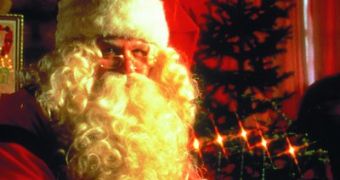If you have a genius child who already knows everything and keeps pestering you with annoying questions like "How does Santa cover so much space in so little time?" or "How come he knows where everybody lives?" a North Carolina State University professor of mechanical and aerospace engineering, Dr. Larry Silverberg, figured out the answers, based on the technology available today. As he shared his knowledge of Santa's ways in a true Christmas spirit, here's what you can tell your toddler.
First, Santa has a complicated system, involving a mixed technology from antenna, mobile phone and EKG/EEG devices that fine-tune the needs of every person, while a signal processor filters and categorizes all data, including addresses, names and year-long behavior. This data is then relayed to a guidance protocol aboard the sleigh, weaving out the most efficient route. Getting to all the millions of houses is also easy, as Santa relies on the properties of the space/time continuum, forming "relativity clouds," according to Silverberg.
"Based on his advanced knowledge of the theory of relativity, Santa recognizes that time can be stretched like a rubber band, space can be squeezed like an orange and light can be bent," explains Silverberg, as quoted by PhysOrg. "Relativity clouds are controllable domains – rips in time – that allow him months to deliver presents while only a few minutes pass on Earth. The presents are truly delivered in a wink of an eye." This also allows him to enter houses normally, without using chimneys.
His reindeer are genetically altered so that they can fly and see in the dark, and their task is easier as they don't have to carry the tons of toys as well. The toys are instead made on the spot with a nano-toymaker, using atoms from soot and snow, just like the DNA spawns organic materials, from tissues to body parts. As for all the food left out for him and his companions, it's not all eaten immediately: most of it is processed by a food dehydrator and stored for later consumption, since the trip actually takes much longer than we perceive.
"This is our vision of Santa's delivery method, given the human, physical and engineering constraints we face today," shares Silverberg. "Children shouldn't put too much credence in the opinions of those who say it's not possible to deliver presents all over the world in one night. It is possible, and it's based on plausible science."

 14 DAY TRIAL //
14 DAY TRIAL //